20 Fast-Growing Succulents for Lush Windowsills and Gardens
I absolutely love shopping online for succulents and gardening supplies. If you aren't already saving money by comparing prices online, give it a try! Here are six of my favorite things that I have purchased online as I build my own succulent oasis:
When I first started collecting succulents, I had high hopes that I would have huge, luscious plants filling my home to the brim in no time. But I soon realized that most plants just don’t grow that quickly.
I’ve since learned that there are a variety of fast-growing succulents that can fill in the gaps while I wait for my slow-growers to catch up. While I can’t be picky and impatient, I can certainly enjoy watching my quick-growing succulents change each week.
If you’ve been collecting succulents for a while, you’ll know that some species are mind-numbingly slow growers. I completely understand that it’s not really encouraging if your goal is to greenify your home and garden ASAP!
Luckily, there are exceptions that are more suited to the less patient among us (including me).
20 of The Fastest Growing Succulents
Since I felt that many lists of fast-growing succulents online can be a bit monotonous, I’ve tried to include as many funky and unusual types of succulents as possible. No Echeveria fest here!
1. Mother of Millions (Kalanchoe Delagoensis)
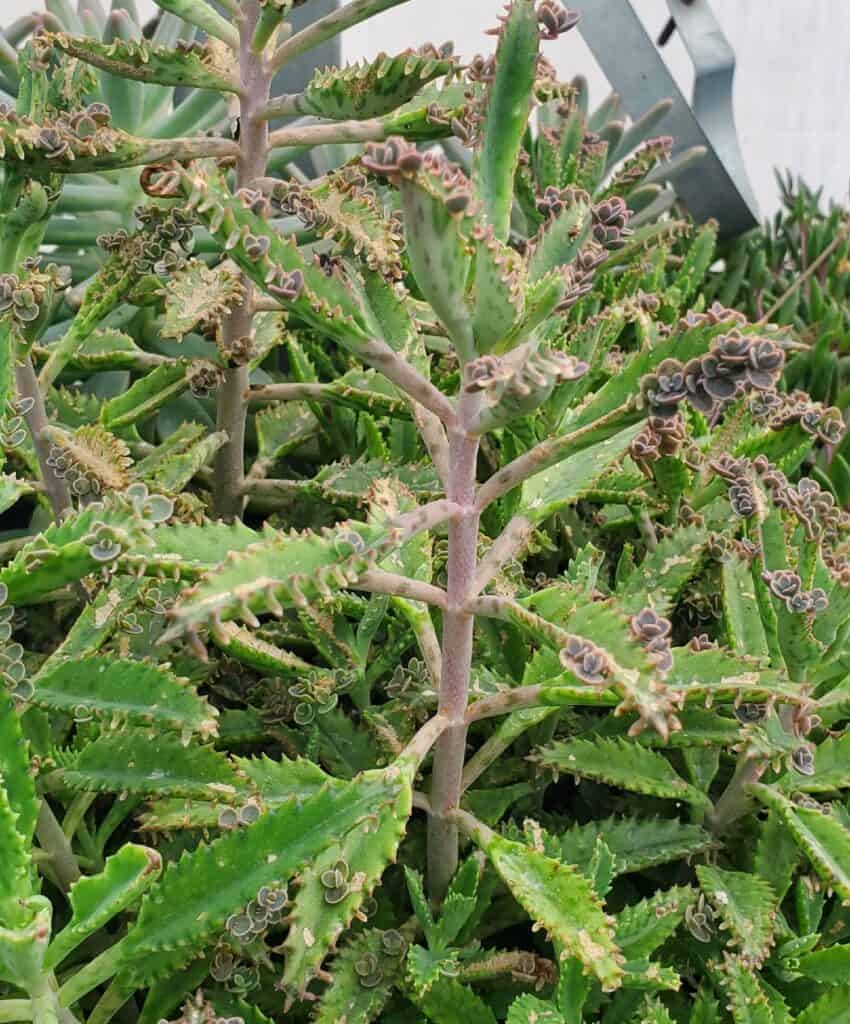
Most members of the genus kalanchoe, which contains over 100 members, are pretty quick growers. One of the most prolific succulents, though, is undoubtedly kalanchoe delagoensis. Also known as mother of millions, this species is well-known for its ability to grow tiny copies of itself on the edges of its leaves. These baby plants fall off at the merest touch, rooting wherever they fall.
Because these offsets grow into adults very quickly and begin to produce their own babies in no time, it’s easy to see how the situation can get out of hand! No worries, though: all you have to do to prevent a kalanchoe overload and be able to enjoy this species’ fast growth is to keep it away from your other plants.
2. Jade Plant (Crassula Ovata)
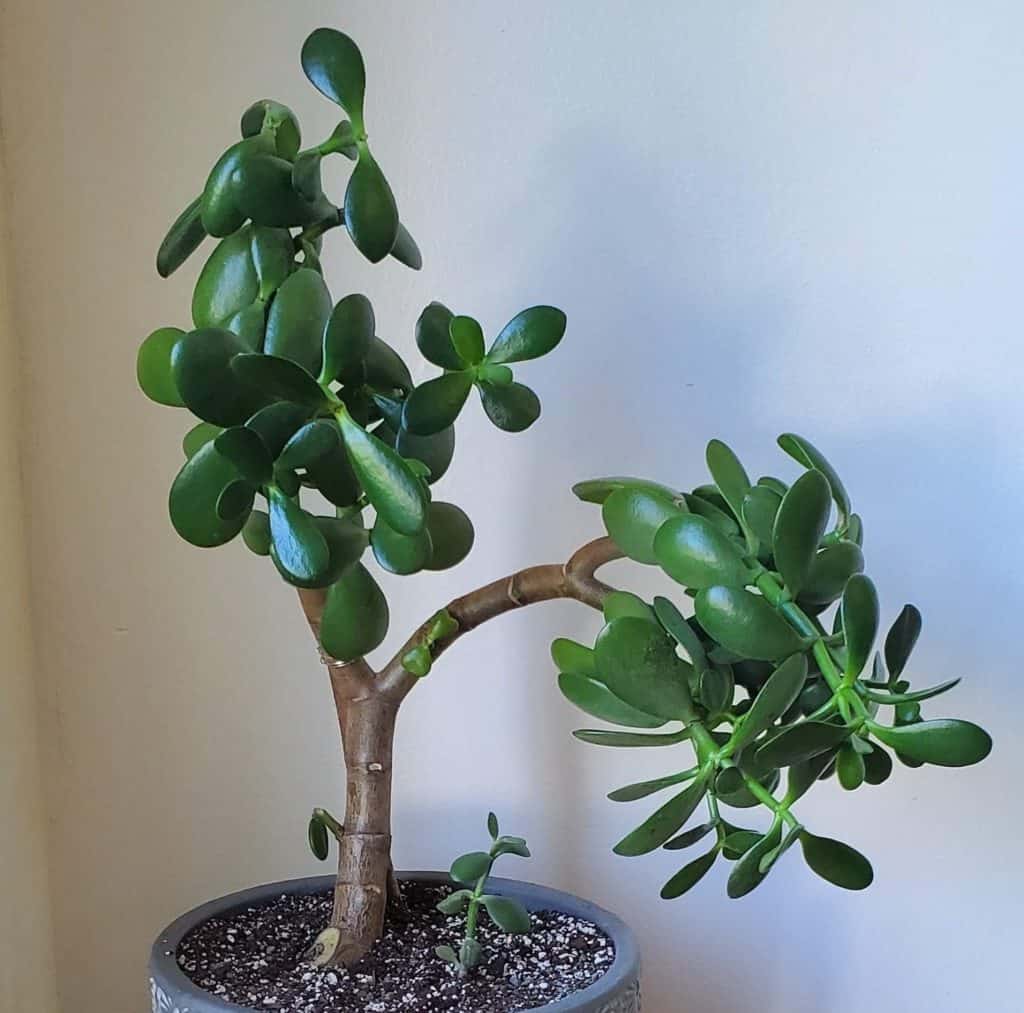
The jade plant is one of the most classic succulent houseplants, and there’s a good reason for that. Not only does this species grow into an attractive, tree-like shape over time, but it’s also easy to care for, not to mention a pretty darn quick grower!
These fast-growing indoor succulents have been around for so long in the houseplant hobby. Nurseries have had plenty of time to develop a bunch of different cultivars. Results of selective breeding include:
- Crassula ovata ‘Hobbit’ (with red-tipped, tubular leaves)
- Crassula ovata ‘Variegata’ (with cream and green marbled leaves)
- Crassula ovata ‘Minima’ (with much smaller foliage)
Don’t forget to also consider similar species in the genus crassula, like crassula arborescens (the silver dollar plant). Their growth rate will usually be pretty similar.
3. Tree Houseleek (Aeonium Arboreum)
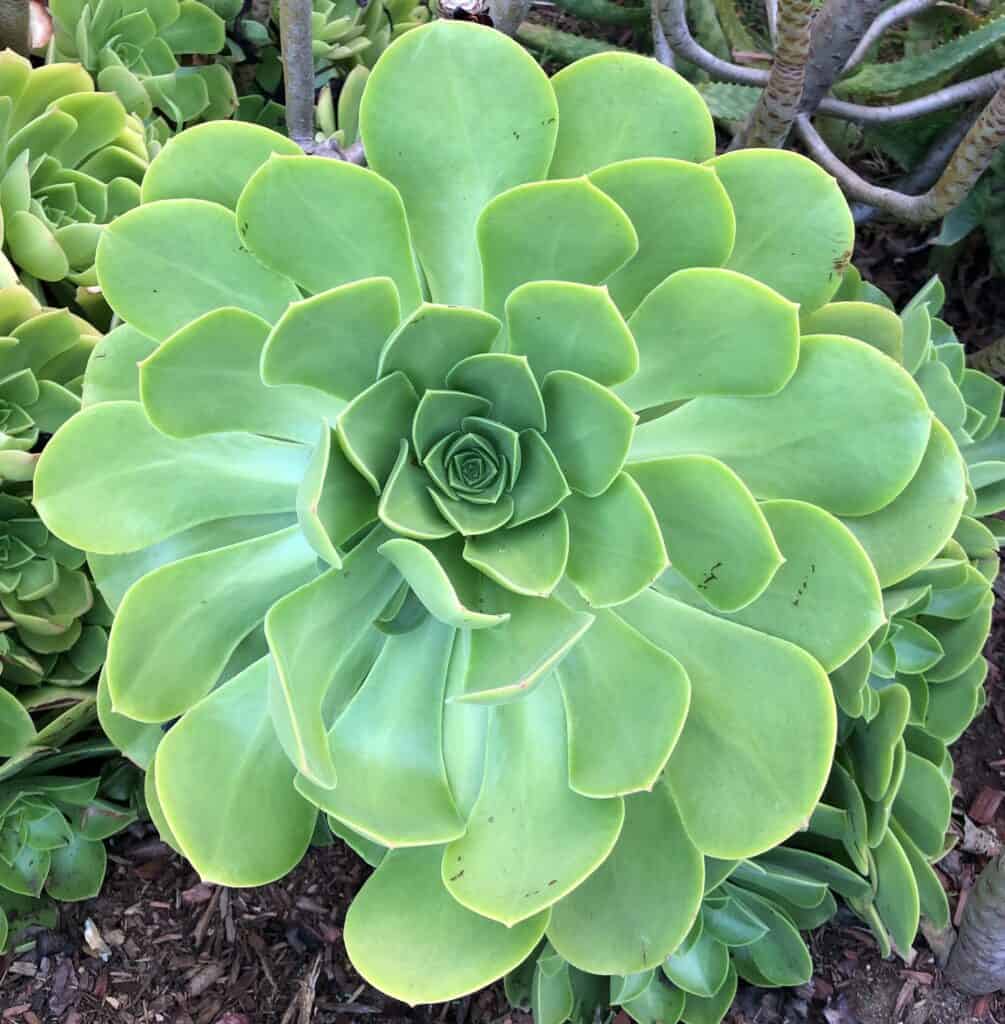
Another popular succulent that can take on a tree-like appearance is aeonium arboreum, better known as the tree houseleek. Native to the Spanish Canary Islands, this species sports lovely green rosettes on long, woody stems. It can also produce yellow flower clusters. If you give yours plenty of light and water, it’ll be a nice and vigorous grower during summer.
For those looking for an even more unusual plant, there’s a reddish-black cultivar of this species out there called aeonium ‘zwartkop’. It’s quite the looker if it gets enough sun.
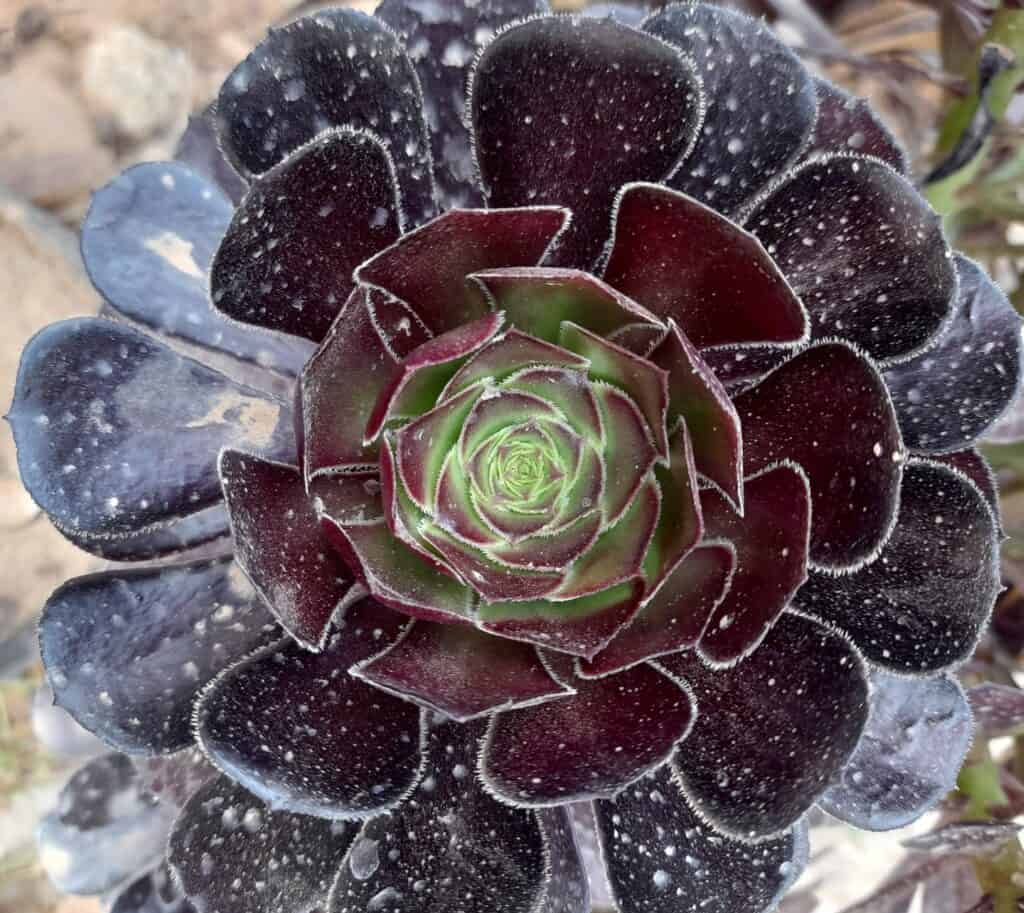
4. Hens and Chicks (Sempervivum Tectorum)
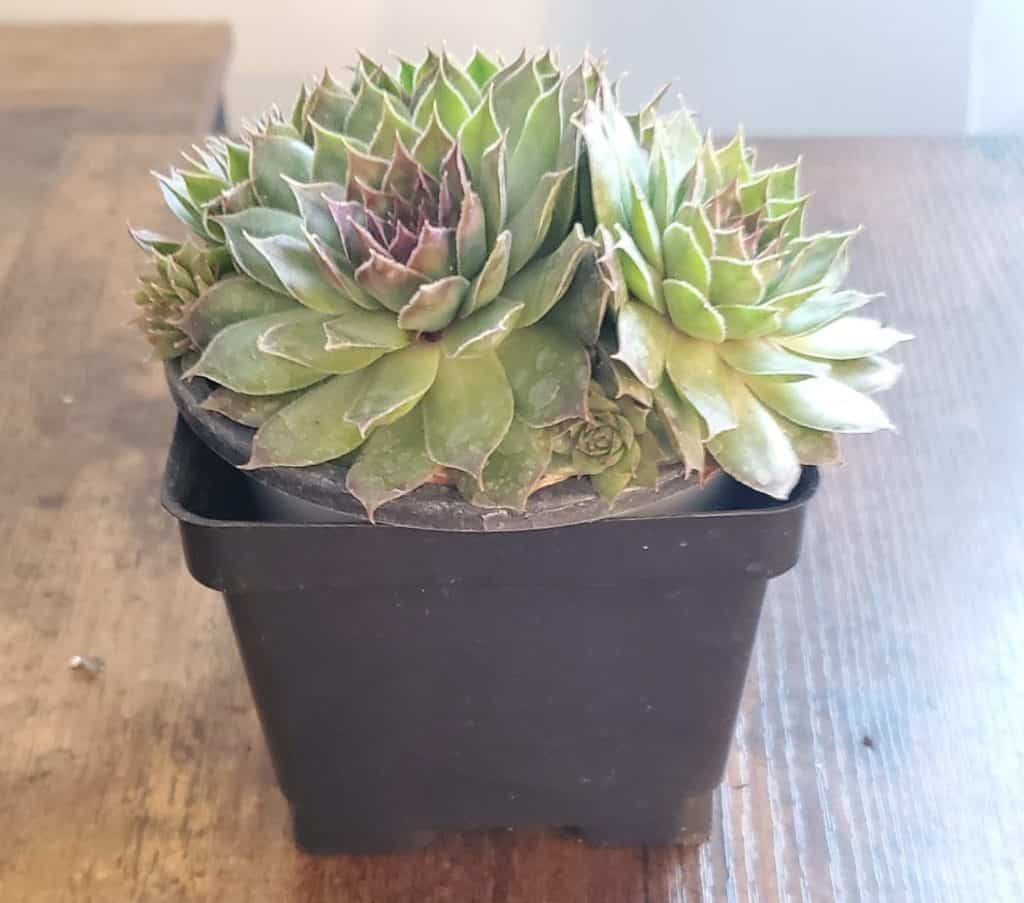
Looking for a quick-growing succulent to grow outdoors? One long-time favorite often used as filler for large planters, or even as cover for living roofs, is sempervivum tectorum. This species is better known as hens and chicks, because it’s a fast grower known for putting out lots of offshoots (the chicks). It’s also unfussy and highly suitable for beginners.
As with many of the other succulents on this list, there are loads of selectively cultivated color varieties of this sempervivum out there. If you’re tired of classic green, why not consider the dark red ‘rubin’, dusty lavender ‘violaceum’ or red-tipped ‘royanum’?
5. Candelabra Aloe (Aloe Arborescens)
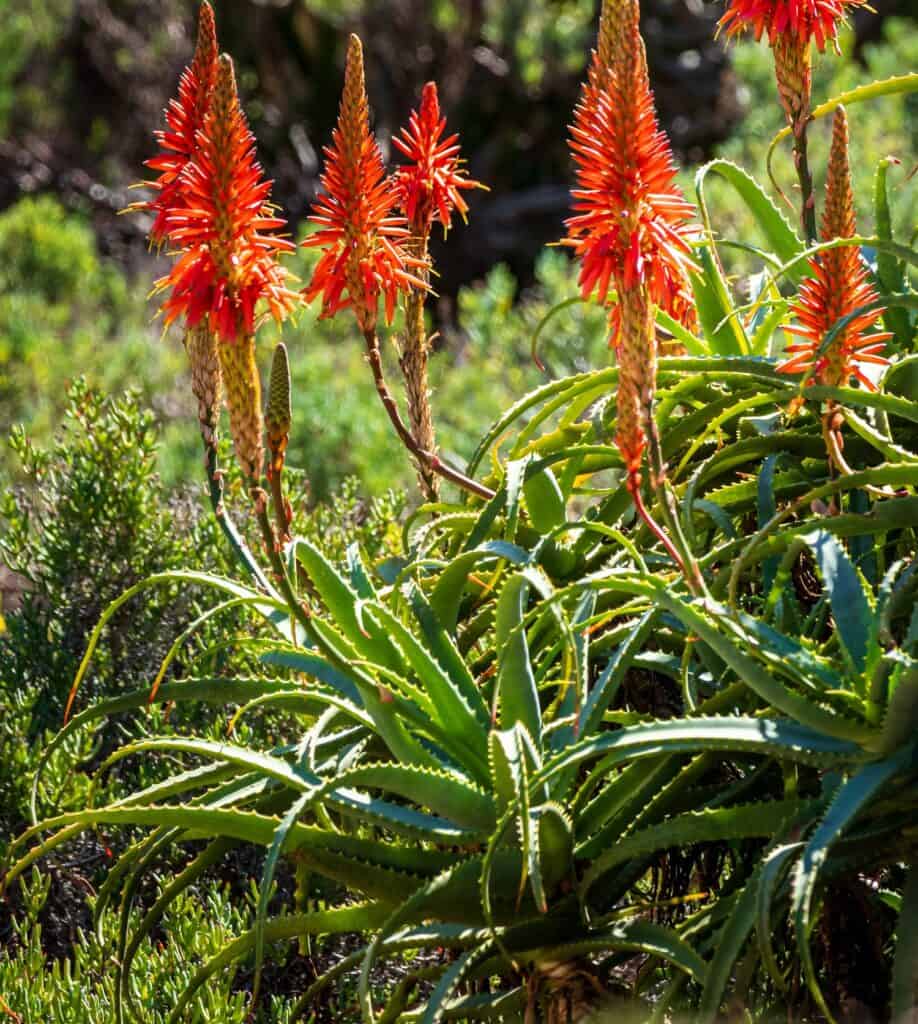
You’ve heard of aloe vera, but have you also heard of the candelabra aloe? Although both are pretty quick growers, in my experience, the latter still wins. Scientifically known as aloe arborescens, which is Latin for ‘tree-like aloe’, the candelabra aloe is characterized by its height. It grows upwards quite vigorously, eventually shedding its bottom leaves and taking on a nice and shrubby appearance.
Aloe arborescens is a breeze to care for and doesn’t need direct sunlight, although it will still definitely appreciate it. Try placing yours outdoors during the summer months to increase the chances of it producing one or more of its beautiful, orange-red flower plumes.
6. String of Buttons (Crassula Perforata)
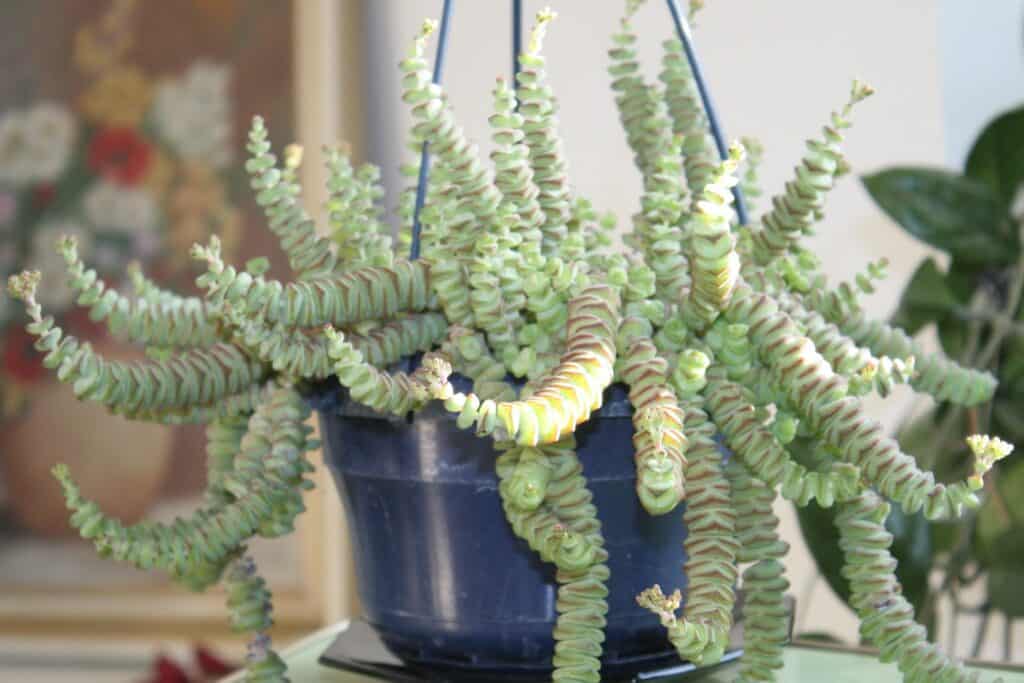
Unsurprisingly, another crassula makes the list. This genus is just full of easy-care, fast-growing succulents! The string of buttons is a decorative species with triangular, stacked leaves. As your plant grows, its long stems will eventually begin to point downward, making this a great option for a hanging planter.
The classic green crassula perforata, which does sport slight red leaf tips, is easiest to find. However, there are also variegated and more deeply red cultivars out there. If you like this unfussy species, be sure to collect them all.
7. Century Plant (Agave Americana)
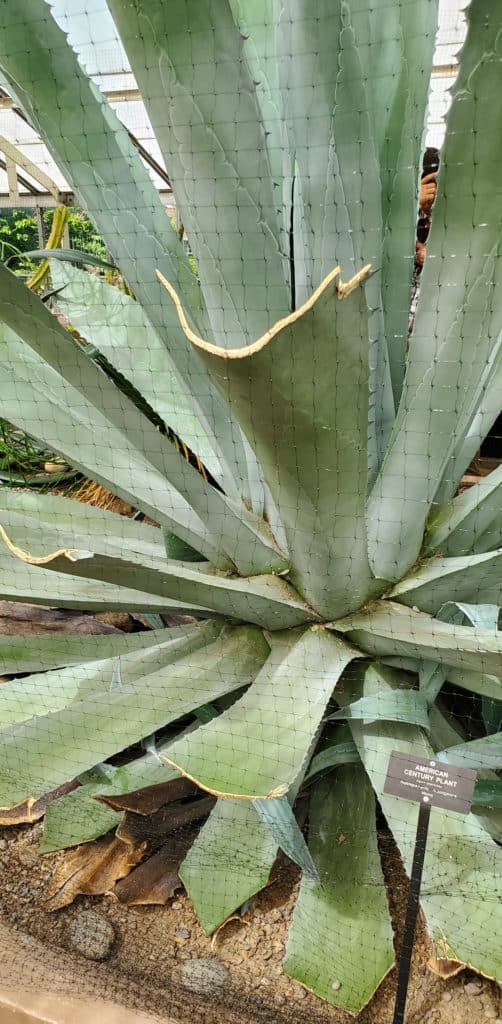
The genus agave in general is robust, making these succulents a good choice for beginners who are searching for fast-growing tall succulents. In fact, they can grow quite large and surprisingly quickly, especially during the first few years of their lives.
One of my favorite agaves is the century plant, agave americana. This one can reach a whopping 13ft in width when cultivated outdoors under plenty of sun. Indoors, things will move a little slower, but you should still see new leaves pop up regularly with the right care.
Although this Agave is originally a bluish-green in color, the cream and green variegated version usually tend to be easier to find.
8. Two-Row Stonecrop (Phedimus Spurius)
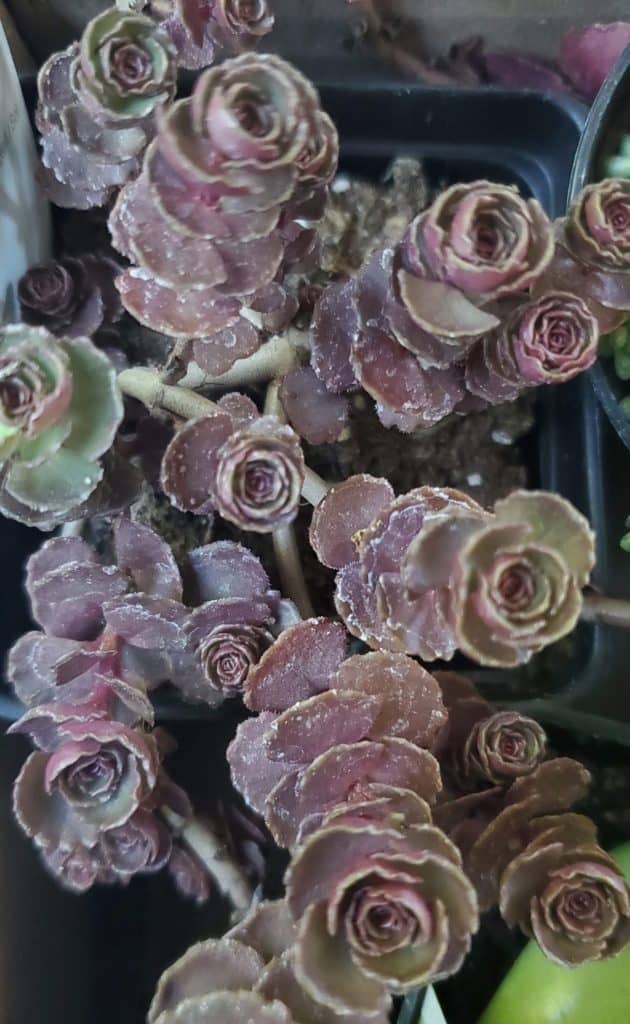
Formerly known as sedum spurium, the two-row stonecrop (phedimus spurius) is an excellent fast-growing succulent ground cover. It does especially well outdoors, although, with plenty of light, you’ll likely also be able to maintain it in the home. A low-growing creeper, this one’s perfect as a filler plant for succulent arrangements. With the right care, it might even bloom a multitude of beautiful small pink flowers!
The original green two-row stonecrop has been extensively selectively bred to produce a variety of different colors. You can get different types of variegated cultivars, as well as wine red, yellow-orange, and much more.
9. Echeveria ‘Perle von Nürnberg’
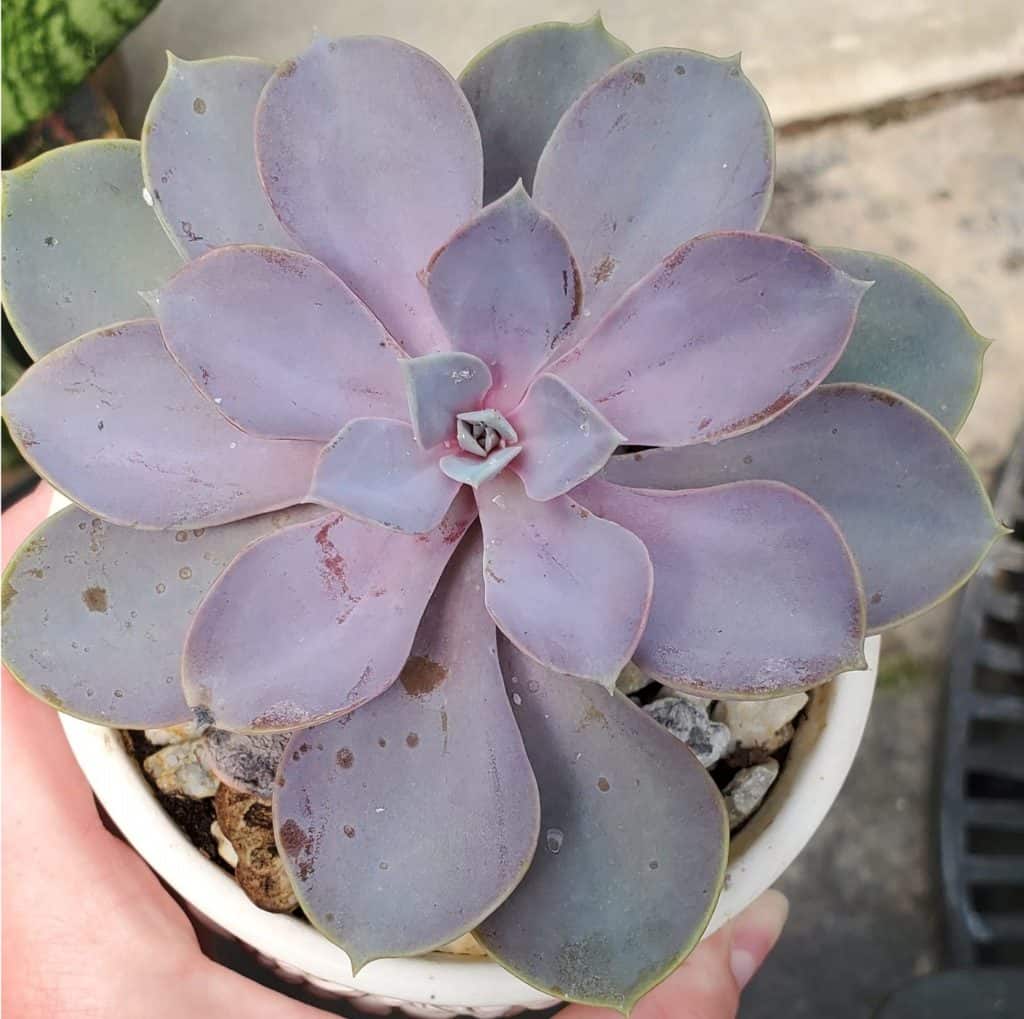
I know I said this post wasn’t going to be an echeveria party, but it is true that these popular rosette succulents are very quick growers. So let’s take a moment to discuss one of the most vigorous varieties: Echeveria ‘Perle von Nürnberg’. This cultivar is widely appreciated for its large leaves and dramatic dusky purple coloration.
Aside from its looks, another big plus this plant offers is its quick growth. It does need to be said that it requires a lot of light, and will tend to languish indoors unless you use grow lights. If you do give it what it needs, maybe placing it outdoors during summer, you’ll be shocked at how fast it can reach the size of a head of cabbage!
10. Florist’s Kalanchoe (Kalanchoe Blossfeldiana)
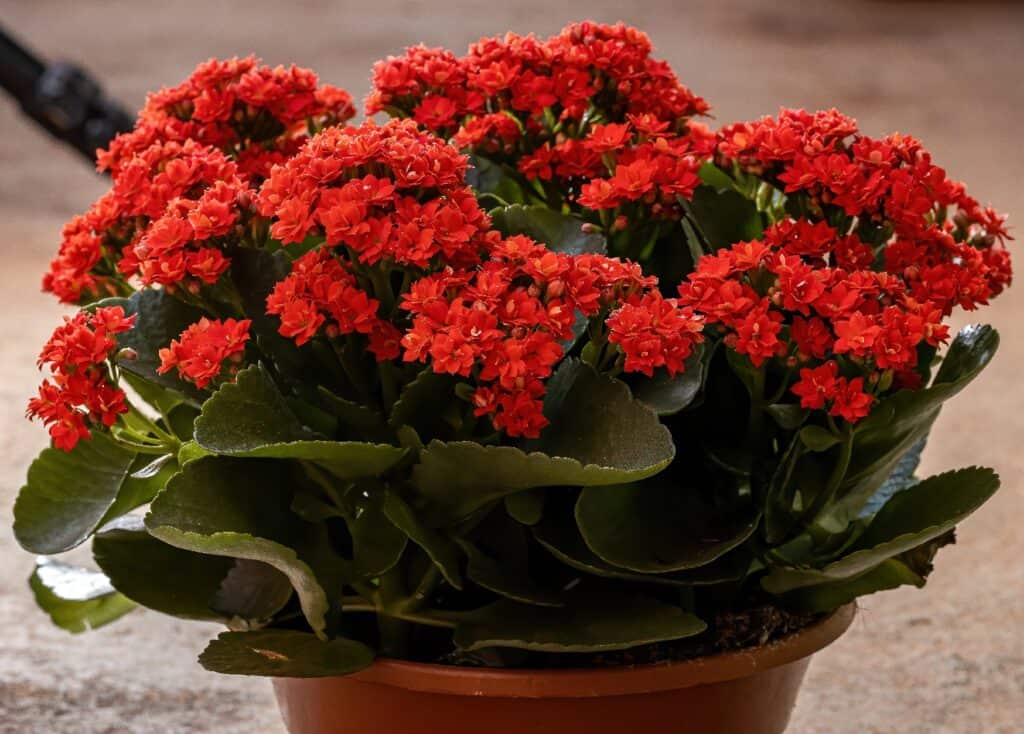
If you love filling your home with colorful flowers, why not consider a succulent that blooms abundantly, like the appropriately named florist’s kalanchoe? Scientifically known as kalanchoe blossfeldiana, this species has long been appreciated for its lovely blooms. Nowadays, it can be found in a range of flower colors, including pink, white, orange and yellow.
What I particularly love about this plant is that it doesn’t bloom in spring or summer, but during winter. It’s the perfect way to introduce a little color during those dark and gloomy days after Christmas, if you ask me.
11. Jellybean Plant (Sedum Rubrotinctum)
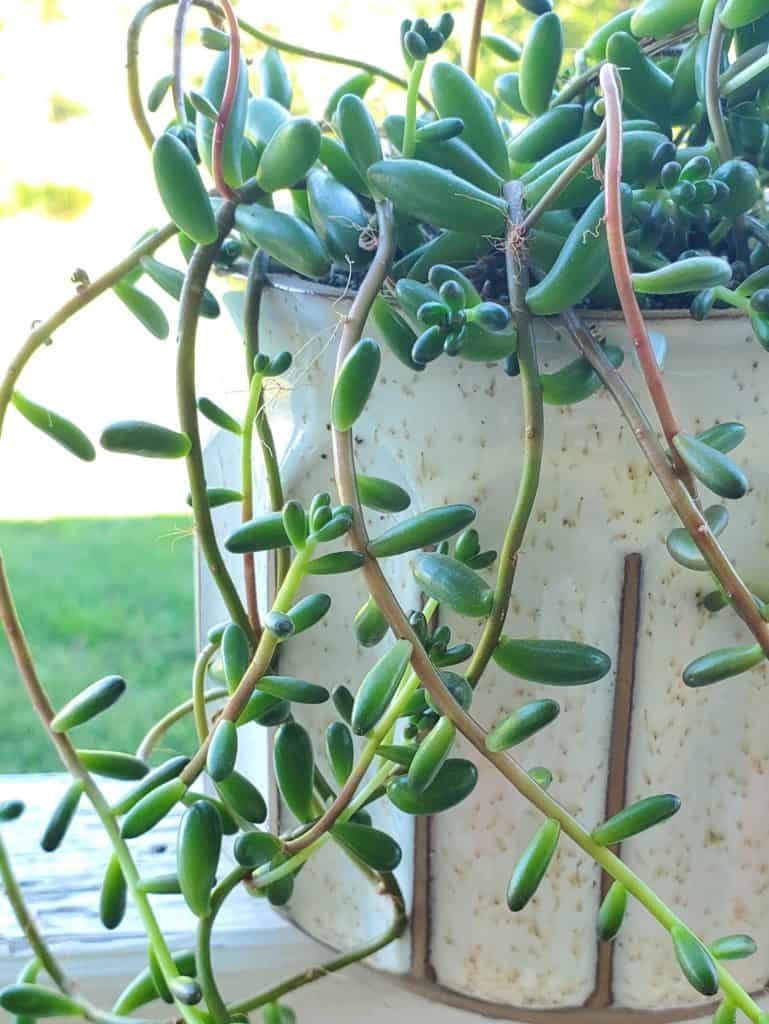
Those who have been growing succulents for a while were probably wondering when a true sedum would make the list. Well, here you have it! This large genus contains around 400 species, many of which are popular in horticulture for their hardiness and quick growth.
Like the aforementioned sempervivum, the jellybean plant (sedum rubrotinctum), with its chubby, red-tipped leaves, is popular as filler for large succulent planters. It’s even suitable for living roofs. And did I mention it’s pretty cold-proof, too? You can grow it outdoors in most climates.
12. Ghost Plant (Graptopetalum Paraguayense)
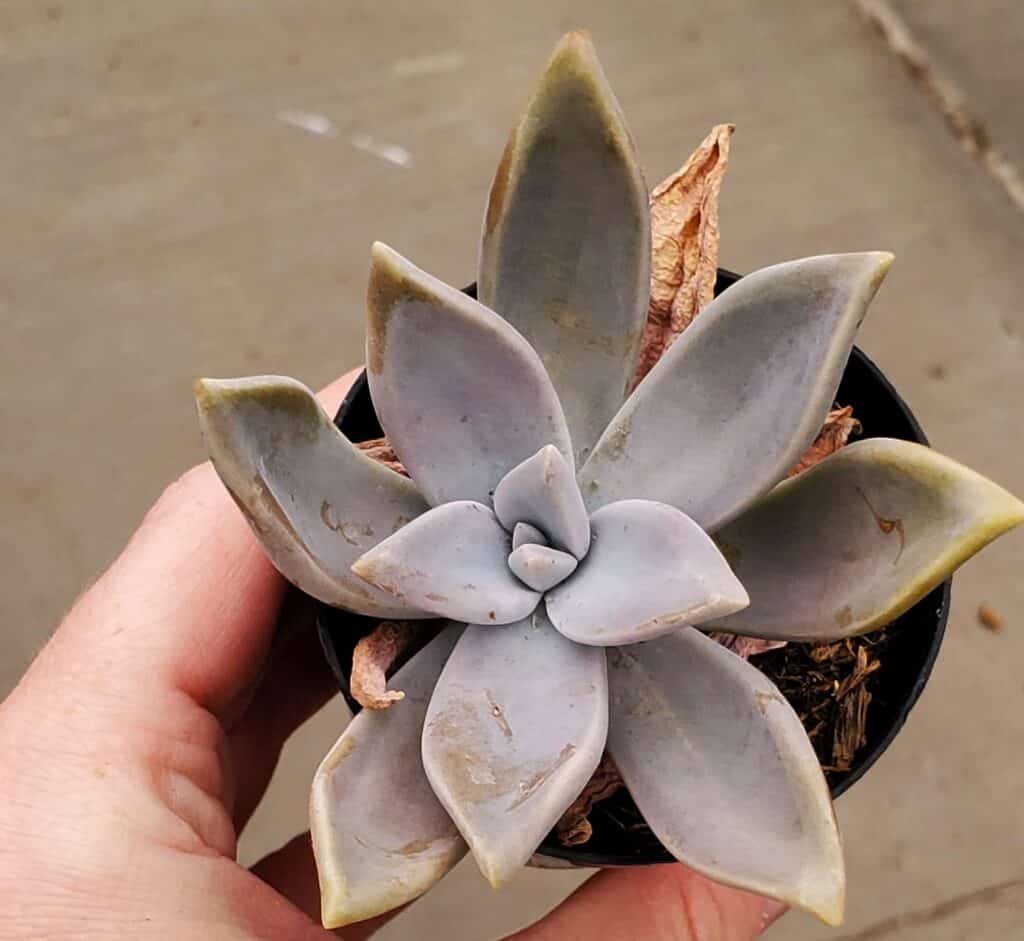
It’s easy to mistake the ghost plant (graptopetalum paraguayense) for an echeveria at first glance, as both feature the same lovely rosette growth pattern. However, as your ghost plant grows (which it’ll do quite quickly) it’ll become clear they’re definitely not the same.
Echeverias are perfect for standing pots, whereas graptopetalum is better suited to a hanging planter. As it matures, it will grow upwards and continually shed its bottom leaves, which eventually causes its long and woody stems to lean down due to the weight of the rosette. One good summer can be enough to fill out a big planter with a whole bunch of lovely “stars on strings”.
13. Thanksgiving Cactus (Schlumbergera Truncata)
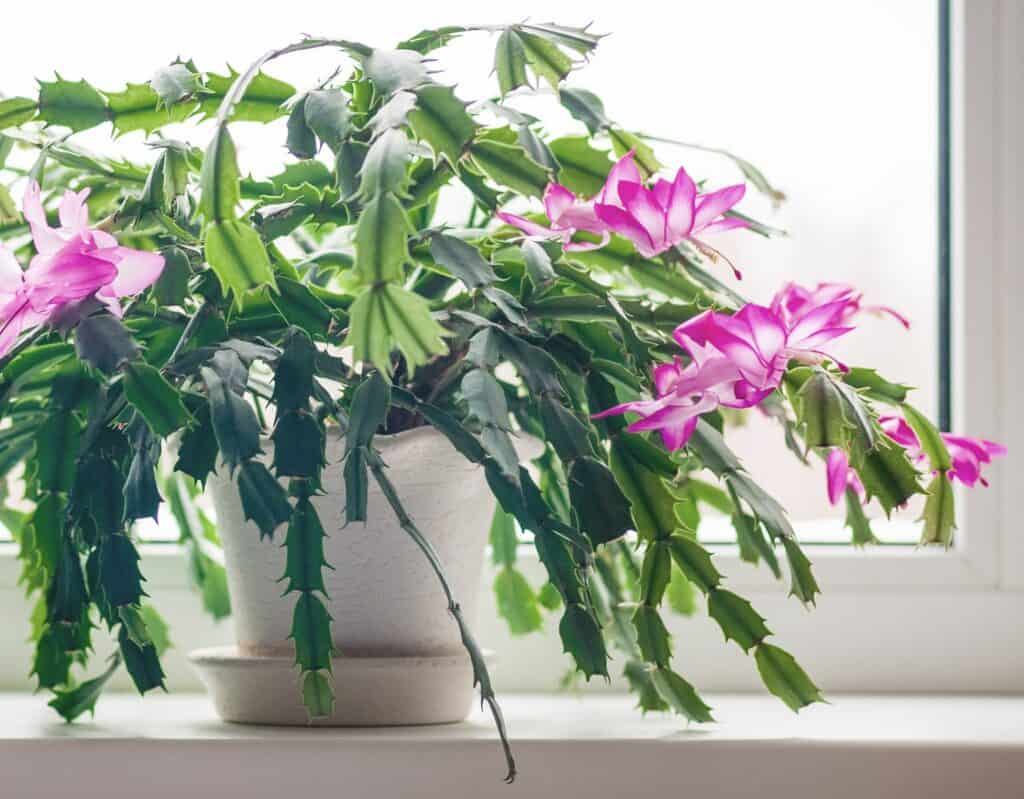
Did the idea of winter flowers that I brought up in the section on kalanchoe blossfeldiana sound attractive? You’re in luck, because this species is by no means the only succulent that blooms during the gloomy part of the year! Another one you can’t miss in your collection is the Thanksgiving cactus, schlumbergeta truncata.
Although truncata is often sold as a Christmas cactus, that’s actually a common name for one of its similarly wonderful cousins, schlumbergera x buckleyi.
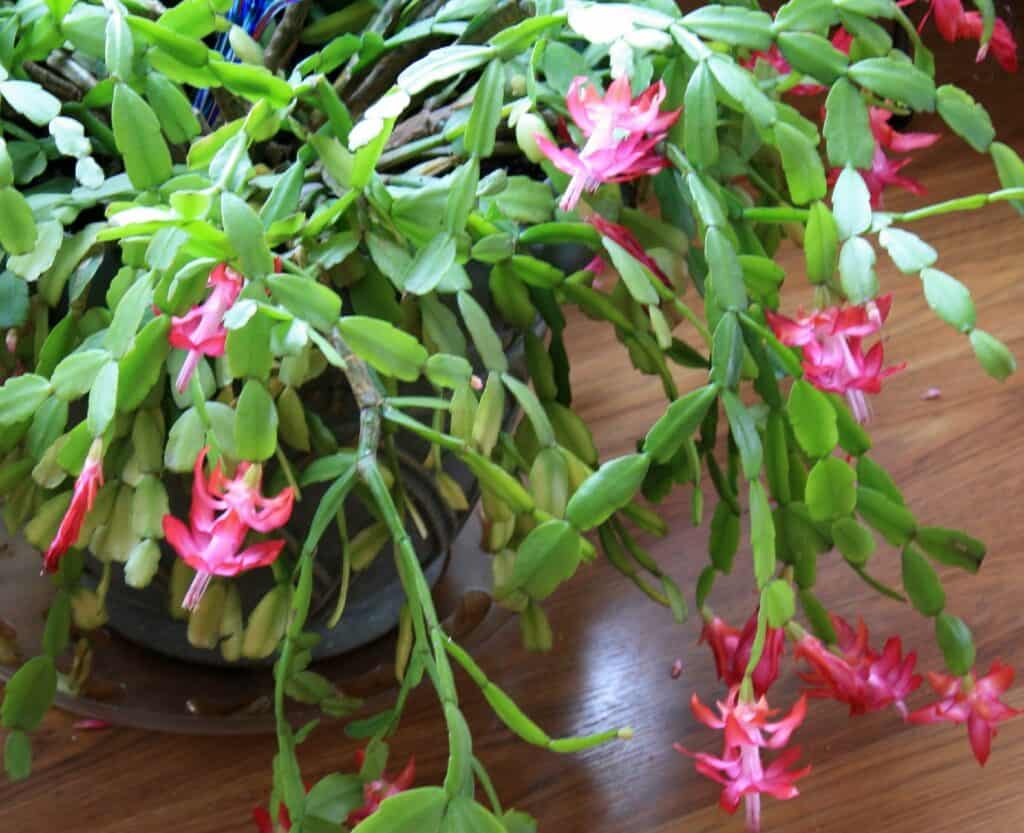
Both bloom during winter, but as their names reveal, one does so a little earlier than the other. Members of the schlumbergera genus are jungle cacti that grow quickly, don’t need a lot of direct sunlight and produce an abundance of flowers in pink, orange, white, red, and more colors.
14. Red Dragon Flower (Huernia Schneideriana)
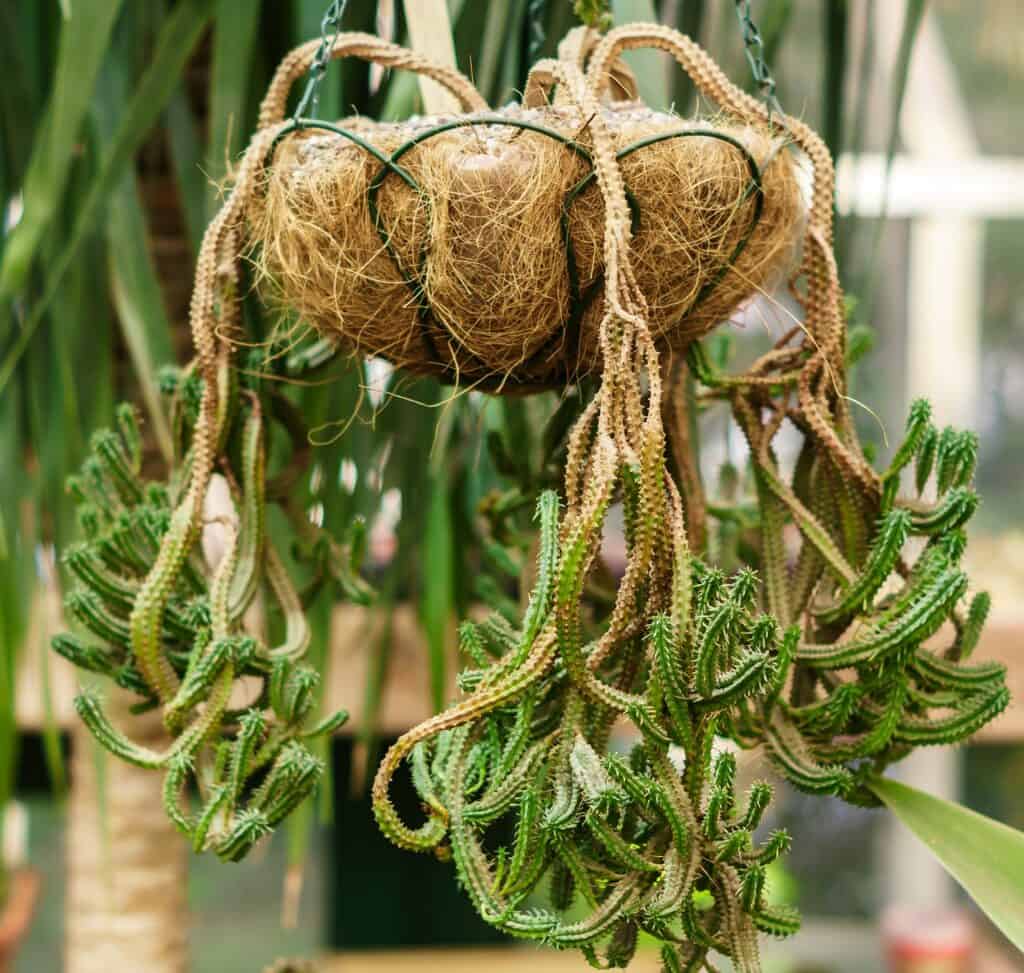
Told you I’d include some oddballs on this list! Huernia is an African genus of succulents naturally pollinated by flies. This means they’ve evolved to produce flowers that smell of and look slightly like carrion. No worries, though: in the case of my personal favorite, huernia schneideriana, there’s no risk of it stinking up your home.
Also known as the red dragon flower due to the deep red blooms it can produce, huernia schneideriana sports elongated toothed stems in lieu of leaves. It can grow very quickly, with the stems eventually spilling over the edge of the planter and creating a neat hanging display.
15. Snake Plant (Dracaena Trifasciata)
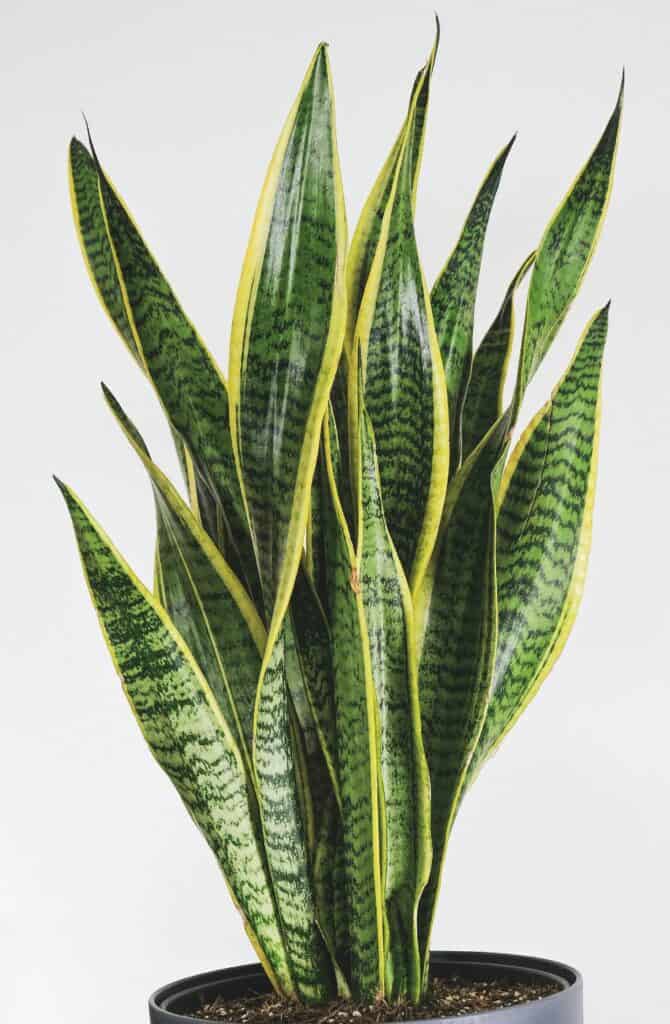
Formerly (and better, to be honest) known as sansevieria trifasciata, the ubiquitous snake plant has now been reclassified into the genus dracaena. This is another one of those succulents that’s been around for ages.
Although snake plants are often touted as perfect low-light plants, they actually appreciate full sun conditions. If you can provide this, then brace yourself, because this species is actually incredibly vigorous. It will put out new leaves all summer long, and may not even bother to really stop during winter.
16. Chinese Dunce Cap (Orostachys Iwarenge)
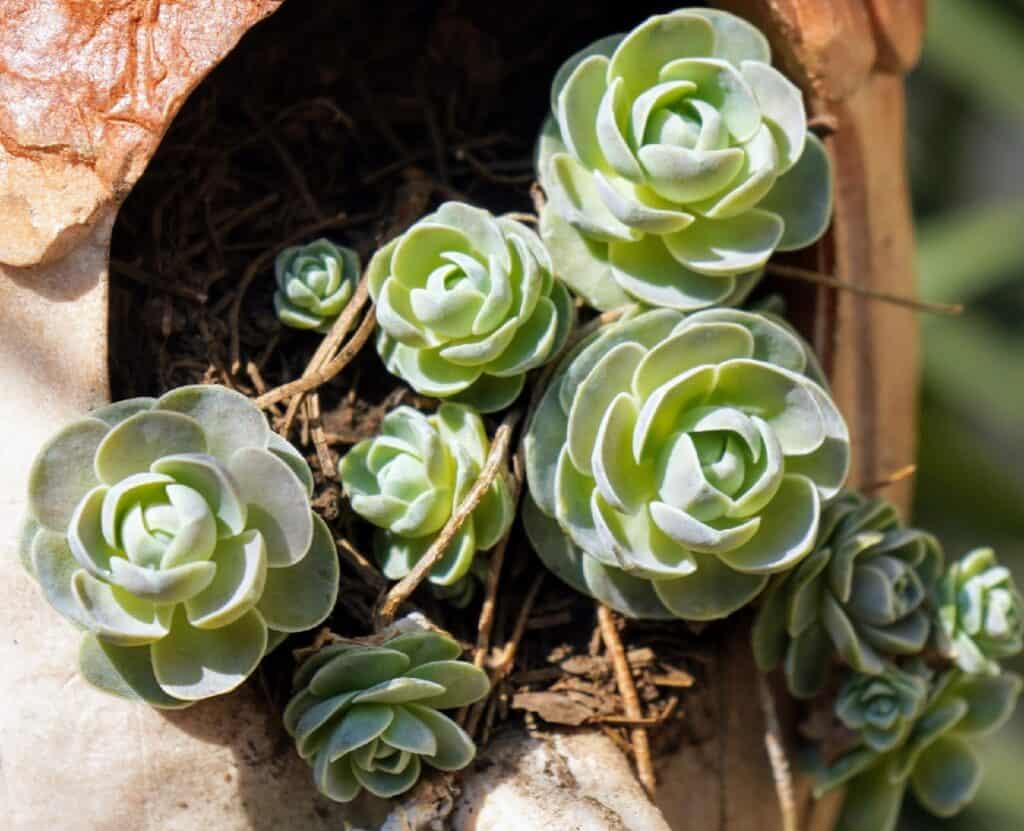
I’m always surprised the Chinese dunce cap isn’t more popular in the succulent hobby. Aside from its somewhat difficult-to-pronounce scientific name (try saying orostachys iwarenge three times fast), it’s actually an ideal species for both beginning and more experienced succulent collectors. Easy to grow, vigorous, robust… what more can we ask for?
This species is hardy, able to withstand quite a bit of frost, and its rosette-shaped offsets on thin, stringy stems are produced at a pretty impressive rate. During bloom time, the rosettes grow upwards into tall cones with hundreds of tiny, pastel pink flowers.
17. Blue Chalksticks (Curio Serpens)
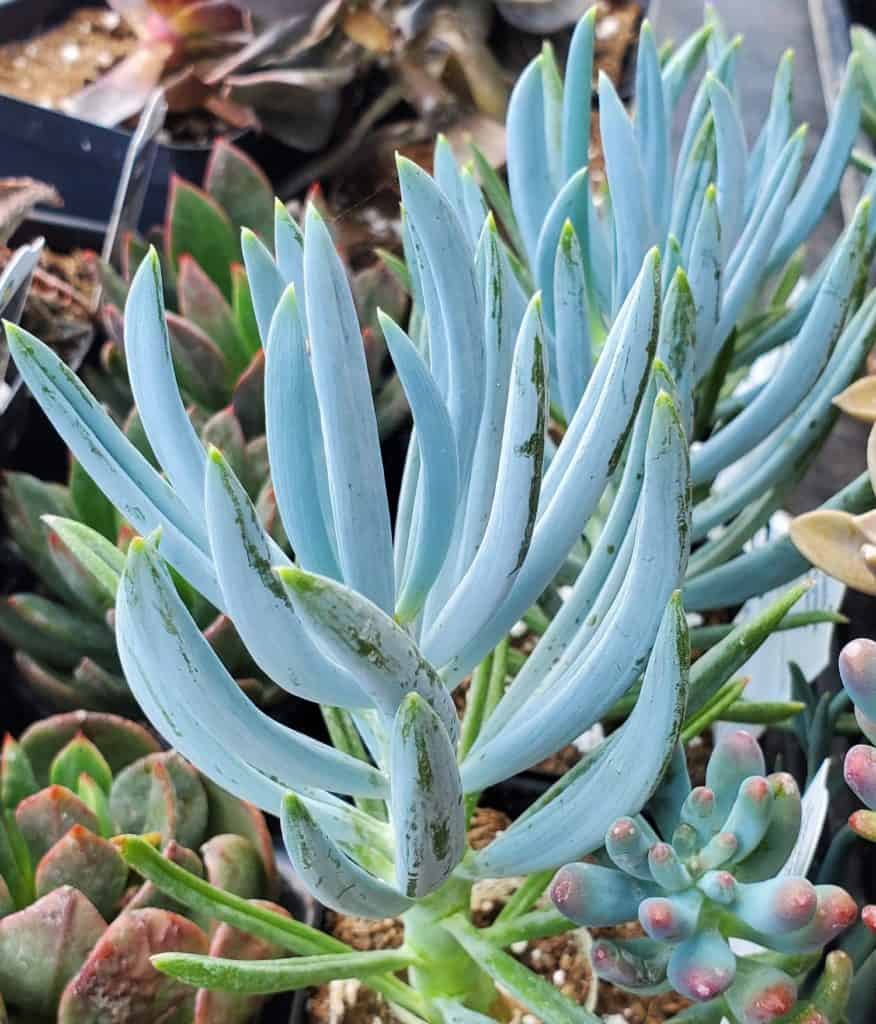
You may be familiar with the genus curio because of curio rowleyanus, better known as the string of pearls succulent. This popular hanging species is quite the looker, but it can be a bit of a difficult plant and isn’t always the quickest grower unless given the perfect living conditions. Still, don’t write off the whole genus, because it has plenty of vigorous species to offer.
One of the decorative and fast-growing succulents in the genus curio is the blue chalksticks plant, curio serpens. This pointy-leaved creeper naturally occurs in South Africa, where it can quickly spread across rocky habitats. Be sure not to touch the leaves to avoid disturbing the powdery layer (called farina) that gives it that typical matte, blue-green color.
18. Dragon Fruit Cactus (Selenicereus Undatus)
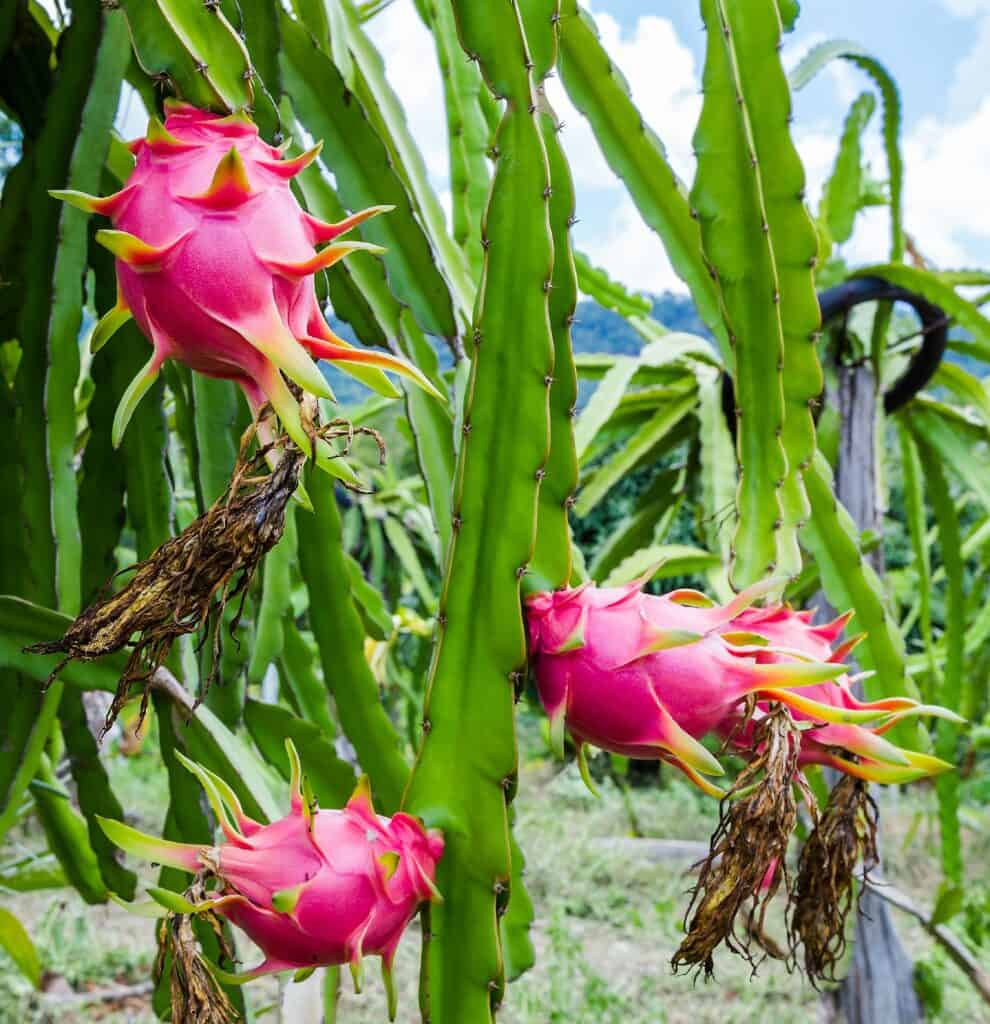
How cool would it be to be able to one day harvest edible fruit from your succulent? We’ve all heard of prickly pear fruits, which grow on opuntia cacti, but did you know that dragonfruit also grows on a cactus? It’s called selenicereus undatus, and it’s actually a nice and quick grower that can bloom spectacularly.
The dragonfruit cactus is naturally a creeper or climber, but in your home, you can place it in a hanging planter for dramatic effect. The stems can become very long and thick! Another option is to trail it into a tree-like shape, as is often done in cultivation.
19. Eve’s Needle Cactus (Austrocylindropuntia Subulata)
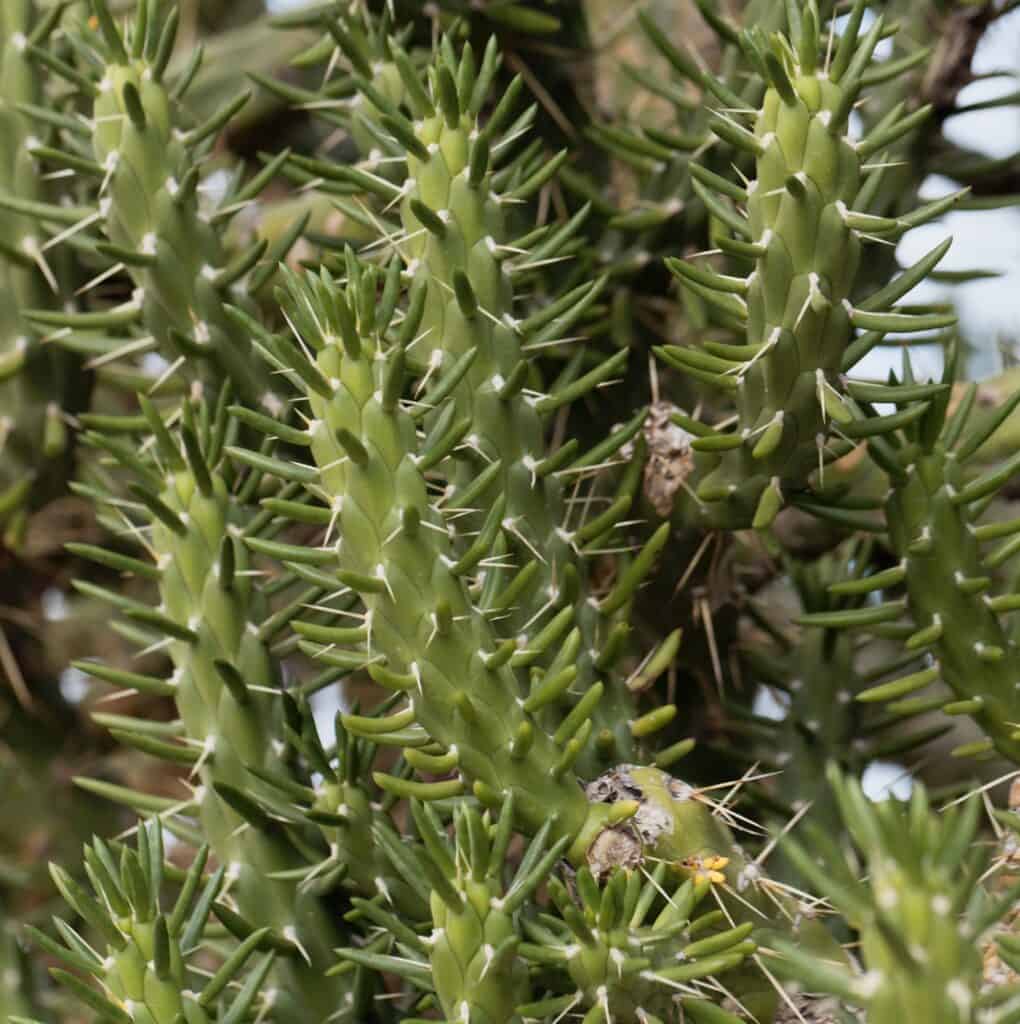
If you live in the southwestern US, you may just have started hyperventilating upon reading “cylindropuntia” in this cactus’ common name. Fear not! We’re not talking about cholla cacti here, although the Eve’s needle cactus is admittedly closely related. It has the same rapid growth rate, but luckily, not quite as many spines.
This one’s hardy, easy to grow and really not fussy about anything except for receiving as much full sun as possible. As a cherry on top, it even produces the most gorgeous little orange-red flowers under the right circumstances.
20. Elephant Bush (Portulacaria Afra)
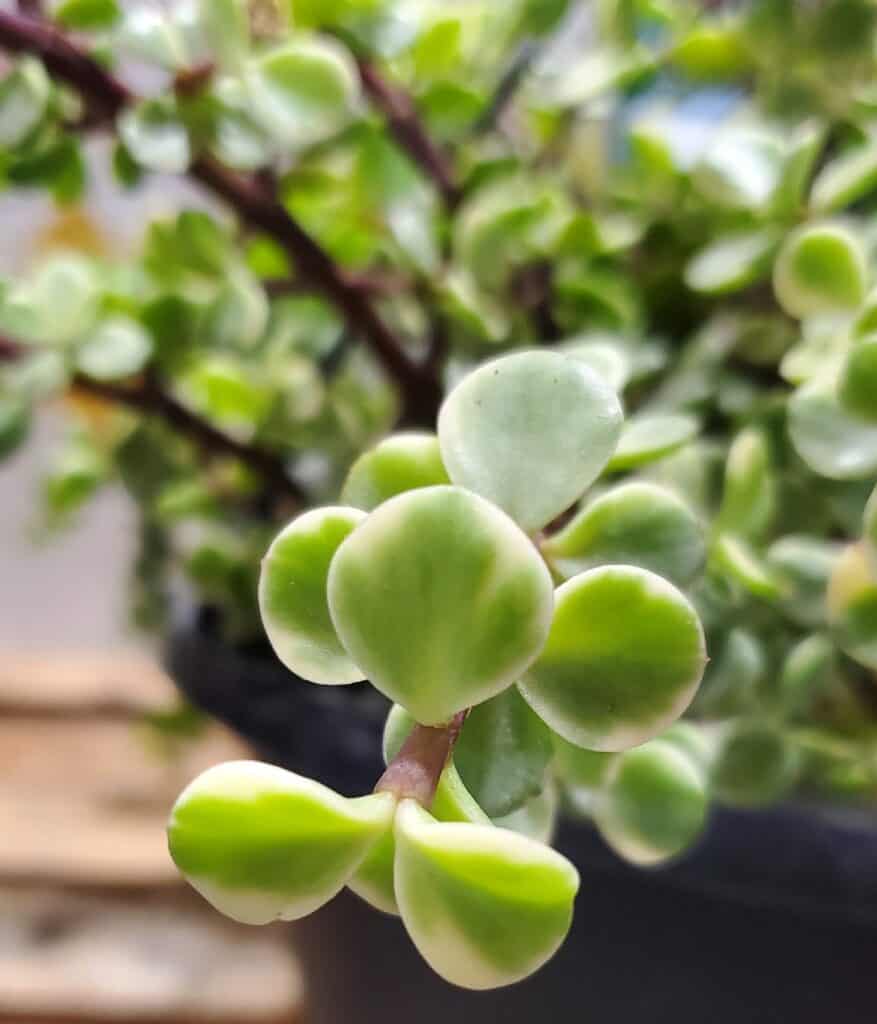
Another decorative and fast-growing South African native – many of our favorite succulents are from here – is portulacaria afra, better known as the elephant bush. It may have been named for the fact that in its natural habitat, elephants and other large herbivores like rhinoceros will consume it as part of their diet.
This species can grow into large bushes, and it does so quite quickly if its needs are met. Its fleshy leaves on reddish woody stems make for an eye-catching look, especially if you go for one of the variegated cultivars. There’s even a naturally occurring creeping version, which is called portulacaria afra ‘prostrata’.
How to Make Your Succulents Grow Faster
Now that you’re aware of which succulents have the potential to be super-fast growers, it’s important to understand that in order for them to attain huge sizes, their requirements need to be met. For starters, it’s a good idea to look up care guides for each new succulent you buy. Not all of them need the same light levels, soil consistency and watering schedule, after all.
The most important factors for quick succulent growth are, unsurprisingly, light and water. Many of these plants have evolved to require full sun, which means that our indoor windowsills aren’t always adequate for them without the assistance of a grow light. Although they can store water, that doesn’t mean you can let them go dry for months at a time. During the summer growing months especially, many can actually become thirsty pretty quickly!
Aside from providing lots of light and watering plenty, there are various other things you can do to help your succulents along. For example, using a fertilizer can provide an extra boost during a succulent’s growing season.
You can find all my tips for encouraging succulent growth in the post on how to grow succulents faster and bigger.
